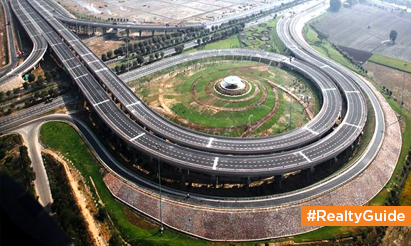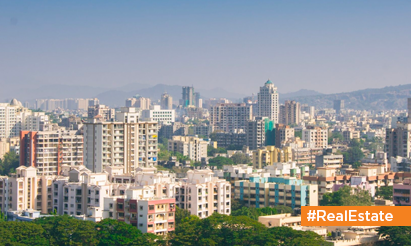High-rise structures in Noida and Greater Noida will feature façade lighting.
The Noida Authority has made it essential for builders to instal façade lighting before seeking for an Occupancy Certificate in the most recent update (OC). The goal is to expedite the installation of façade lighting in new high-rise buildings along the Noida-Greater Noida Expressway. Continue reading to see why façade lighting is being installed in Noida and Greater Noida.
To expedite the installation of façade lighting along the Noida-Greater Noida Expressway, the Authority has made it obligatory to instal façade lighting prior to filing for an Occupancy Certificate. Approximately 40 developers of completed real estate developments have received letters requiring them to finish the assignment within a four-month time frame. Supertech e-square, Advent, Divine India, and Skymart are among the developers involved in the project’s initial phase. The law applies to all structures within a 250-metre radius of the road.
Buildings along the connecting road between Greater Noida and Noida Extension may also be required to comply with this guideline.
What exactly is facade lighting?
Facade lighting is a lighting method and design style that emphasises the outside contours of a building or structure. Its principal function is to draw attention to the building’s front elevation and distinguishing features.
The façade illumination plan for the Noida-Greater Noida Expressway
The Noida Authority has made façade lighting mandatory for structures along the Noida Expressway. Building ordinances have been amended to require that 40 percent of the front of a highway-facing building be illuminated by façade lights. The exercise’s goal is to create a panoramic night picture of Noida comparable to other booming international cities like as Dubai, Singapore, and New York.
Noida will eventually have modern façade illumination modelled after prominent international cities. The Noida Authority has developed plans to illuminate the city’s skyline along the Noida-Greater Noida Expressway.
New Lighting Regulations For The Noida-Greater Noida Expressway
The Noida Authority has amended the building code rules to require the installation of façade lighting in structures on both sides of the Noida-Greater Noida Expressway. According to recent amendments to the Uttar Pradesh Industrial Area Development Act, a building owner must instal façade lighting on at least 40% of the front frontage. The new guidelines provide the developer the option to pick the design, colour, and kind of façade lighting. They can even employ advanced laser beams to customise the illumination.
If the Authority sends a notice on the matter, the allottee must respond within two months. If the allottee fails to begin construction on the lighting project within two months of receiving notification, officials will take appropriate action against the leaseholder.
Greater Noida’s Façade Lighting Strategy
The façade lighting project in Greater Noida might begin at Knowledge Park IV, where the Authority’s office is situated. This new policy may apply to many structures in Delta and Alpha Sectors that are placed in front of the road. The Noida Extension to Greater Noida Road is 22 kilometres long, and numerous developments feature both business and residential offers. Schools and universities, businesses, and housing developments would be required to put lights on the sides of their structures that face the major road. The façade lights will be installed at a distance of 500 metres.
Disclaimer: The views expressed above are for informational purposes only based on industry reports and related news stories. PropertyPistol does not guarantee the accuracy, completeness, or reliability of the information and shall not be held responsible for any action taken based on the published information.




